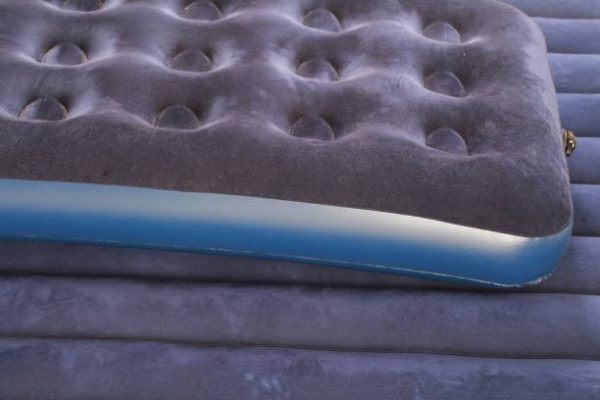A low-air loss mattress is a hospital bed with a special type of mattress that can be used to prevent and heal bedsores or pressure ulcers. Patients who are bedridden or have difficulty moving from one position to another can benefit greatly from them because they can spread the pressure more evenly throughout their bodies, reducing the likelihood of developing painful and potentially serious skin problems.
What You Should Know About Low Air Loss Mattresses
A low air loss mattress works on a very basic principle; that is air is constantly blown from the mattress surface. The airflow does several things:
The air flowing through the mattress distributes the weight of the patient evenly and assists in pressure redistribution. Distributed pressure on pressure points: This relieves pressure on any given part of the body, especially bony prominences such as the hips, sacrum, and heels, where pressure sores often appear.
Low air loss water mattresses can regulate heat and moisture assuring optimal atmosphere therapy. The airflow is beneficial to help evaporate any moisture on the skin surface that would otherwise lead to skin break aging and keeps the skin dry In addition, the low volume, gentle air flow in the pouch area maintains a cool and dry environment against the skin, which is essential to avoid skin maceration and to promote healthy skin.
Greater Comfort: Patients often prefer to avoid traditional hospital beds and opt for low air loss mattresses, because they provide consistent support along with airflow, unlike traditional beds. Not only is there improved patient satisfaction with this comfort, but it also contributes to better sleep quality and better overall health.

Functions of Low Air Loss Mattresses
Low air loss mattresses typically consist of multiple layers, although the design can differ greatly.
Air Cells: In its core structure, the mattress contains individual air cells that are connected to a central air supply system. Adipose-derived stem cells are produced from biocompatible components that may support and endure the body weight and activities of the patient.
Inflating Device And Control System: This is the part where you connect the mattress to the electric air pump, which will quell the air current within the mattress. Today a mattress is usually run by a digital controller module that permits the caregiver to dial the stiffness as well as airflow besides ease-of-use for pain and pressure ulcer prevention.
A Cover: The top layer material is usually made up of a breathable fabric that wicks moisture away, helps air to work more efficiently and provides a comfortable surface for the patient.
Advantages of Low Air Loss Mattresses
Pressure Ulcer Prevention: Pressure injuries avoid these mattresses that decrease the pressure and maintain the health of the epidermis skin against the skin and decrease the risk of pressure ulcers.
Increased Overall Quality Of Life: Low air loss patients commonly experience less pain and discomfort along with faster and less stressful healing of their wounds in comparison to patients placed on alternative care surfaces. In sum, It can be argued that a low air loss mattress is highly important for relieving and treating pressure sores in bed or immobile patients. The constant airflow means that mattresses such as these can change in response to the environment in which they are placed. This allows the mattress to redistribute pressure around the body to the areas that need it the most, not only helping to reduce pressure-related pain but also making it more comfortable to sleep. And as technology moves forward, they continue to evolve and provide more and more relief to patients who need it most. Our mattresses are selected, monitored, and maintained by healthcare providers who wish to promote the health of their patients by addressing their pressure relief prevention and treatment requirements.
 Gearfuse Technology, Science, Culture & More
Gearfuse Technology, Science, Culture & More


